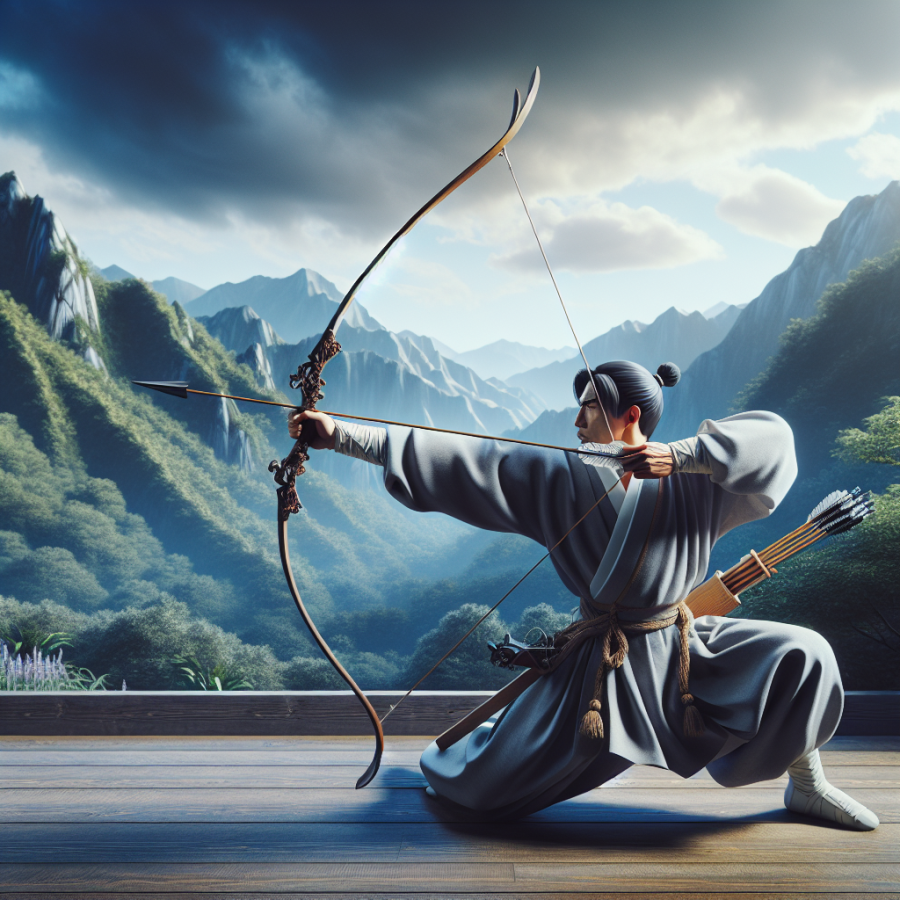Tracing the Origins: The Historical Journey of Gungdo
Gungdo, or Korean traditional archery, has been an integral part of Korea's cultural and martial history, encapsulating the spirit and philosophy of its people throughout the centuries. The historical journey of Gungdo is a testament to its profound significance and the roles it has played in Korean society.
The bow has been a companion to Koreans since prehistoric times, with evidence of its use dating back to the Gojoseon kingdom, often referred to as Ancient Chosun, established around 2333 BCE. Archery was not merely a military skill or hunting tool; it was deeply embedded in the socio-political fabric of the kingdom, symbolizing the virtues of a noble gentleman and the strength of a warrior. The "hwarang" of the Silla Kingdom, an elite warrior group known for their martial prowess and scholarly attributes, also adopted Gungdo, thereby perpetuating the tradition of archery as a reflection of both physical and intellectual refinement.
As we transition into the Goryeo dynasty (918–1392), Gungdo took on a more structured form with the establishment of military officialdom that placed high value on archery skills. Competitions and examinations were regularly held to select the most skilled archers for military service. These events, known as "gungsi," were not only critical for military preparedness but also became popular public spectacles and a means of reinforcing social hierarchy and discipline.
Continuing its prominence, the Joseon dynasty (1392–1897) saw an even greater emphasis on Gungdo, reflecting the Confucian ideology that underscored the era. Confucianism advocated for a disciplined and virtuous way of life, and Gungdo was seen as a tool to cultivate one's character and moral integrity. The Joseon rulers, with King Sejong the Great being a notable enthusiast, actively promoted archery practices. This led to the widespread establishment of archery fields and schools known as "jangsubang" throughout the kingdom.
Moreover, Gungdo evolved to maintain its relevance even during times of peace. The introduction of "Jeongsa," which means "ceremonial archery," transformed it into a harmonious blend of ritual and sport. These ceremonial archery events were often held during festivities, combining both entertainment and the observance of tradition.
Despite the decline in the practical military application of Gungdo with the advent of firearms, the art form persisted.
Read also:
GolfCross: Revolutionizing Traditional Golf with a New Twist
Perfecting the Bow: Techniques and Philosophies Behind Gungdo Mastery
Delving into the nuanced world of Gungdo, one must not only practice the physical aspects of this traditional Korean archery but also embrace its underlying philosophies. Gungdo, akin to its Japanese counterpart Kyudo, is steeped in tradition, where mastery is pursued not just as a matter of hitting the target but as a path to personal and spiritual development.
In the realm of Gungdo, perfecting the bow is an art that requires a harmonious blend of inner poise and outer technique. To achieve proficiency, an archer must adhere to a rigorous discipline that develops both physical skill and mental fortitude. These two branches of mastery define the Gungdo archer's journey.
Firstly, consider the technical foundation of the perfect bow. Gungdo emphasizes the importance of the 'Five Steps' or the 'Five Methods' known as Gungdo Ohaeng: Standing (Jase), Ready (Gyeokkum), Set (Daijuk), Release (Balee), and Completion (Gwanhwal). Archers are taught to respect and master each step:
1. Standing (Jase): The archer finds their grounding, establishing a stable and balanced stance. The feet are positioned slightly apart, with the body's weight distributed evenly. This initial step is crucial as it sets the tone for the rest of the sequence.
2. Ready (Gyeokkum): In this step, the archer prepares the mind and body for the shot. It is a moment to focus, with the bow gripped firmly and the arrow nocked on the string. The breath is controlled, and the mind is cleared of distractions.
3. Set (Daijuk): The drawing of the bow, or Daijuk, requires coordinated strength and grace. The archer lifts the bow, drawing the string back with precision. It's essential that this action is fluid and consistent to ensure accuracy in the shot.
4. Release (Balee): The release is the culmination of the archer's physical technique—a test of timing and control. When the string is released, it should be a natural extension of the breath and concentration. The release should be neither hesitant nor forced.
5. Completion (Gwanhwal): After the arrow flies, the archer must maintain their posture and composure, reflecting on the shot and retaining a serene state of mind.




